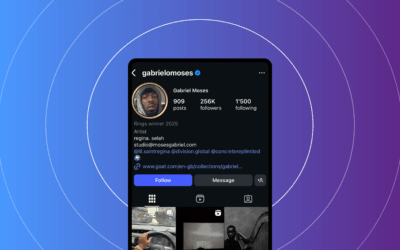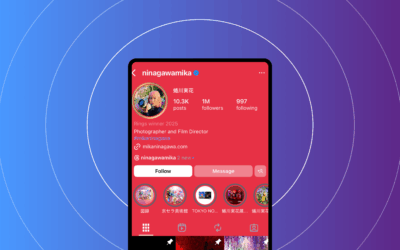Typical Gamer Net Worth
People search for Typical Gamer net worth to understand a creator’s business value. In 2025, that figure is more than a single public number. It’s a mix of ad revenue, sponsorships, IP value, merch, and off‑platform income, adjusted for costs and liabilities. This article shows a practical model to estimate it and explains how AI is changing the game in social media and journalism workflows
What does “Typical Gamer net worth” mean in 2025?
Net worth is a simple formula but tricky in practice. It equals total assets minus liabilities. Assets include cash, IP value, business equity, and inventories. Liabilities include loans and other obligations. Net worth is not the same as earnings or revenue, which are inflows over a period.
Why figures vary online: platform opacity, undisclosed deals, and off‑platform income all skew public estimates. The name “Typical Gamer” often shows up in brand briefs and market chatter, but the underlying value depends on contracts, exposure, and the ability to monetize across platforms.
Private sources versus public dashboards matter. For brands, directional signals like audience size, engagement, RPMs, and rights availability matter more than a single number. See, for example, public metrics tracked by SocialBlade for channel data and RPM proxies; benchmark rate guidance appears in Influencer Marketing Hub; industry trend data comes from Statista.
How Typical Gamer net worth is estimated (revenue streams and valuation factors)
The estimation framework combines annualized revenue streams with the present value of business/IP assets. Then a multiple is applied to reflect growth, risk, and platform dependence. It’s a directional model, not a precise forecast.
Primary revenue streams and example formulas
- YouTube ad revenue (YouTube Partner Program)
- RPM vs. CPM: RPM is creator revenue after YouTube’s cut; use RPM in your model.
- Formula: Monthly YouTube ad revenue = (monthly views ÷ 1,000) × RPM
- Typical ranges: $1–$8+ per 1,000 views, depending on niche and geography.
- Sources: SocialBlade; Influencer Marketing Hub.
- Live streams (Twitch / YouTube Live)
- Components: subscriptions, Bits/donations, live ads, tips.
- Example: Annual sub revenue = subs × net per sub × 12 (net per sub ~ $2.50 after split).
- Sources: Twitch Help; Streamlabs.
- Sponsorships and brand deals
- Models: flat fees, per-video, per-impression, licensing, revenue share.
- Rule-of-thumb: Sponsorship fee ≈ engaged audience × engagement rate × CPM‑equivalent; $500–$50,000+ per activation.
- Source: Influencer Marketing Hub.
- Merch and digital products
- Drivers: audience size, conversion rate (1–5%), AOV, purchase frequency.
- Formula: Annual merch = audience × conversion × AOV × purchase frequency.
- Sources: Shopify; Statista.
- Licensing, appearances, consulting, and other IP income
- Examples: licensed content, guest appearances, conferences, advisory work.
- Valuation: recurring income may be discounted or multiplied (1–3x trailing revenue).
- Source: Investopedia.
- Passive income and investments
- ETFs, equities, real estate can move personal net worth but are often hidden from public calculators.
Estimation caveats and confidence bands
Build low/likely/high scenarios for RPMs, sponsorships, and live revenue. Privacy matters—treat any figure as directional without invoices or contracts.
Worked illustrative example (modeling only, not a real person):
- 5M monthly YouTube views, 10,000 Twitch subs, 500k Instagram followers, merch $25k/year, 6 sponsorships at $10k each.
- YouTube ads: 5,000,000 ÷ 1,000 × $3 RPM = $15,000/month → $180,000/year
- Twitch subs: 10,000 × $2.50 × 12 = $300,000/year
- Sponsorships: 6 × $10,000 = $60,000/year
- Merch: $25,000/year
- Sum annual revenue ≈ $565,000
- Valuation: 2–4x revenue → ~$1.1M–$2.3M enterprise value (before personal assets/liabilities).
Notes: These are illustrative numbers. Real figures depend on contracts, costs, taxes, and assets. For a transparent approach, use ranges with explicit assumptions.
Sources: SocialBlade; Influencer Marketing Hub; Streamlabs; Twitch Help; Statista; Investopedia.
AI’s role in content creation today
Thesis: AI can boost output and reduce marginal costs, shifting earnings potential and negotiation dynamics.
Where AI plugs in (tool examples)
- Scripting and ideation: Outline hooks, scripts, and chapter markers. Tools: OpenAI.
- Automated editing and scene selection: Text edits, filler-word removal, multicam syncing. Tools: Descript, Runway.
- Visuals and thumbnails: Concept art, background swapping, upscaling. Tools: Adobe Firefly, Runway.
- Voice cloning and synthetic VO: Consistent intros/outros. Tools: ElevenLabs.
- Analytics and performance prediction: Topic research, title testing, retention analysis. Tools: VidIQ, TubeBuddy.
Monetization implications
- Efficiency gains can raise output and ad/sponsor opportunities with the same team.
- Cost reductions boost gross margins and cash flow, aiding valuation multiples.
- Lean AI workflows enable multi‑platform asset creation, expanding sponsorship and merch opportunities.
Risks to value
- Authenticity and trust risks if AI is overused or misrepresented.
- Platform policy and disclosure risks with AI-generated content.
- Brand safety concerns if synthetic assets aren’t clearly labeled.
Evidence and adoption
- McKinsey: Generative AI can unlock productivity in marketing and personalization.
- Adobe Firefly and Runway: mainstream adoption of generative imaging/video tools.
- Descript: Text editing and overdub features for single creators.
Practical example
If a creator posts 8 long-form videos per month and earns $1,200/video, AI can halve editing time and scale to 16 videos/month. At $1,200 per video, annual revenue could rise from about $115k to $230k before costs, potentially improving margins and a sale-ready profile.
Sources: McKinsey; Adobe; Runway; Descript.
AI in editorial content and journalism: relevance for brands and publishers
AI in journalism and creator workflows shares common ground but adds public-interest and ethics concerns. AI can speed up drafting, summaries, and alerts, while still needing human oversight.
Benefits for publishers
- Speed and breadth: draft briefs, summarize transcripts, produce highlights quickly.
- Personalization: targeted newsletters and content suggestions at scale.
- Accessibility: automatic captions and translations extend reach.
Risks and perception
- Accuracy and hallucinations: AI can make claims that require fact-checking.
- Attribution and sourcing: clear citations and rights management are essential.
- Reputational risk: mistakes erode trust and may affect advertiser relationships.
Governance and ethics
- Newsrooms are building AI usage guidelines with human oversight. Columbia Journalism Review documents best practices; UNESCO emphasizes transparency and accountability.
- Reuters Institute notes rising AI adoption with guardrails in major outlets.
Brand safety angle
- Require AI usage disclosures and editorial oversight in sponsorships. Include source lists and correction policies.
- Earned media can signal scale and influence; it’s a signal, not a revenue substitute.
Sources: Columbia Journalism Review; Reuters; UNESCO.
Practical implications for CMOs and Heads of Influencer Marketing
Lead thesis: AI changes how authenticity, ownership, and ROI are measured in creator partnerships.
Actionable checklist for briefs and negotiations
- Value beyond follower counts: inspect engagement quality, RPMs/CPMs, and revenue diversity. Request anonymized campaign case studies and retention graphs.
- AI usage disclosure: include a one-page process overview—what parts were AI-generated or edited, and how you will label it.
- Rights and ownership: spell out licenses for AI assets, training data boundaries, usage windows, and derivatives. Include indemnity for rights issues.
- Pricing tiers: offer “human-produced” and “AI-assisted” options with clear scope and outcomes, not just hours worked.
- Measurement and ROI: set KPIs (qualified reach, view-through conversions, LTV), attribution windows, and post-campaign reports.
Sample clause
“Creator certifies that all AI-generated or AI-assisted assets used in this campaign are disclosed in writing, comply with platform and legal guidelines, and assigns to the Brand the licensed rights to use such assets across specified channels. Creator will indemnify Brand against third‑party IP claims arising from unauthorized AI training data.”
Budgeting tip
Use valuation signals to set guardrails. Size deals by performance proxies, not just rumors. Benchmark with realistic RPMs, sponsorship CPMs, and documented confidence ranges.
How to estimate Typical Gamer net worth (methodology and cautions) — step-by-step
A reproducible 6-step method keeps estimates transparent and defendable.
- Collect public metrics: monthly views, followers, upload frequency, live stats, geography. SocialBlade helps with public data.
- Estimate platform revenue streams:
- YouTube ads: monthly views ÷ 1,000 × RPM; use low/likely/high bands.
- Twitch/Live: subs × net per sub × 12; add tips/ads conservatively.
- Sponsorships: deals × average fee; adjust for rights.
- Sources: SocialBlade; Influencer Marketing Hub.
- Model merch/digital products: audience × conversion × AOV × frequency; adjust margins.
- Add external revenue: licensing/appearances; apply 1–3x trailing revenue if recurring.
- Convert to a valuation range: apply 1–3x revenue; higher for diversified, lower for single‑platform risk.
- Reconcile with assets: add cash/investments, subtract liabilities; present low/likely/high bands with explicit assumptions.
Worked numeric example (different inputs)
- Inputs: 3M monthly YouTube views; 4,000 Twitch subs; 4 sponsorships at $12,500; merch AOV $45 with 1% conversion to 300k warm audience/year.
- YouTube: 3,000,000 ÷ 1,000 × $3 RPM = $9,000/month → $108,000/year
- Twitch subs: 4,000 × $2.50 × 12 = $120,000/year
- Sponsorships: 4 × $12,500 = $50,000/year
- Merch: 300,000 × 1% × $45 × 1 = $135,000 gross; 40% margin → $54,000/year
- Total annual revenue ≈ $332,000
- Valuation: 1.5–2.5x → ~$498,000–$830,000 enterprise value before personal assets/liabilities.
Cautions: Platform policies change; RPMs swing by season and geography. Agent fees, taxes, and business costs reduce take‑home cash. Treat figures as directional, not exact.
Sources: SocialBlade; Influencer Marketing Hub.
Compliance, ethics, and brand safety
Disclosure matters. Include a visible line in videos/descriptions about AI use. Brands should require this in briefs and approve scripts or thumbnails beforehand.
Verification and regulation
- Cross-check earnings claims with invoices or anonymized statements when possible.
- Follow FTC guidance on disclosures and endorsements.
- Maintain guardrails to protect trust and avoid demonetization or tie-ups with questionable content.
Sources: FTC; FTC influencer guidance.
Gamer Net Worth FAQs
How much earnings does a Typical Gamer make?
A gamer’s annual earnings vary widely. They can range from low five figures to mid-six figures or more, depending on views, subs, and sponsorship mix. Public estimates differ because many deals stay private.
What is the net worth of tg?
There is no confirmed public net worth. Estimates use public revenue proxies and standard valuation methods, so figures are best read as ranges.
Does a Typical Gamer have a Lamborghini?
Usually no. The top creators may invest in high-value assets, but most creators reinvest earnings into growth, not flashy purchases.
What is Typical Gamer’s real job?
The job is “Creator.” It includes content production, partnerships, merch or digital products, and community management. Some also license IP or host events.
How does AI influence a creator’s monetization?
AI can scale output and lower costs, boosting margins and opportunities. But it also raises authenticity and policy risks that teams must manage.
How do brands estimate a fair rate for a gaming creator?
Start with engaged reach and base CPMs, then adjust for format, rights, and goals. Use benchmarks but validate with analytics and pilots.
Are net worth lists accurate for creators?
They’re directional at best. Use them as a starting point, then build your own scenario ranges with transparent math.
Conclusion and key takeaways
Use a simple, transparent model: annualized platform income plus sponsorships, merch, and IP/licensing, minus costs, then apply a conservative multiple for business value. Ask for proof of RPMs/CPMs and a clear scope for deliverables. Treat AI as both a lever and a risk: faster output and lower costs can raise value, but only if authenticity and brand safety are protected. Build governance into briefs with AI usage disclosures, IP/indemnity clauses, and clear measurement plans. Finally, keep learning—policies, tools, and market rates evolve quickly, so revisit your model quarterly.
Influencer Marketing Articles
Actionable tips to get more success with influencer marketing campaigns
Reach vs Impressions: What’s the Difference (and Why It Matters)
Who is Gabriel Moses?
Discover Gabriel Moses, the London-born artist blending fashion, music, and heritage into striking visual narratives. From Dior to Johnnie Walker, see why he’s shaping culture.
Who is Mika Ninagawa?
Discover Mika Ninagawa, Tokyo’s visionary photographer and film director celebrated for her vivid art, bold storytelling, and win at Instagram Rings 2025.






